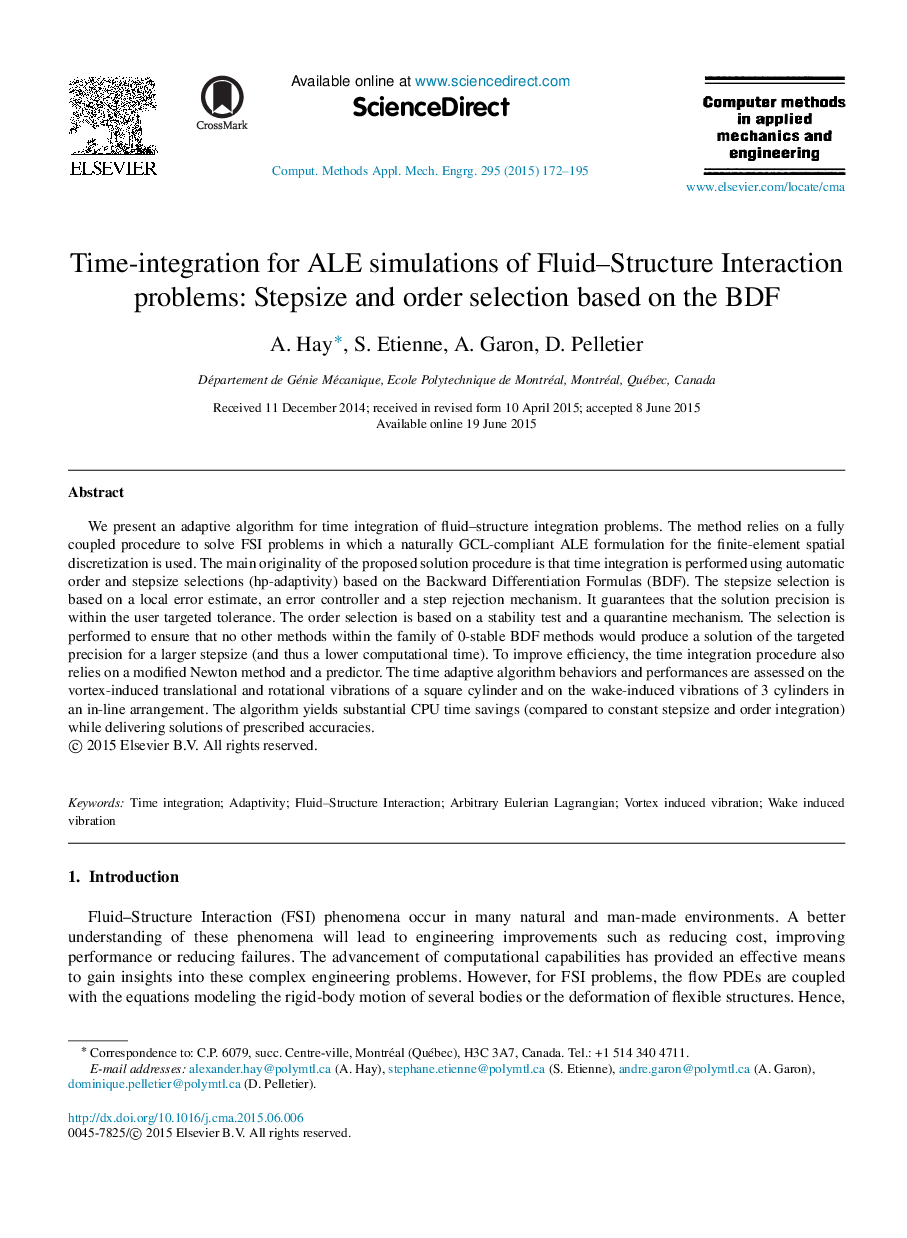| Article ID | Journal | Published Year | Pages | File Type |
|---|---|---|---|---|
| 497636 | Computer Methods in Applied Mechanics and Engineering | 2015 | 24 Pages |
We present an adaptive algorithm for time integration of fluid–structure integration problems. The method relies on a fully coupled procedure to solve FSI problems in which a naturally GCL-compliant ALE formulation for the finite-element spatial discretization is used. The main originality of the proposed solution procedure is that time integration is performed using automatic order and stepsize selections (hp-adaptivity) based on the Backward Differentiation Formulas (BDF). The stepsize selection is based on a local error estimate, an error controller and a step rejection mechanism. It guarantees that the solution precision is within the user targeted tolerance. The order selection is based on a stability test and a quarantine mechanism. The selection is performed to ensure that no other methods within the family of 0-stable BDF methods would produce a solution of the targeted precision for a larger stepsize (and thus a lower computational time). To improve efficiency, the time integration procedure also relies on a modified Newton method and a predictor. The time adaptive algorithm behaviors and performances are assessed on the vortex-induced translational and rotational vibrations of a square cylinder and on the wake-induced vibrations of 3 cylinders in an in-line arrangement. The algorithm yields substantial CPU time savings (compared to constant stepsize and order integration) while delivering solutions of prescribed accuracies.
